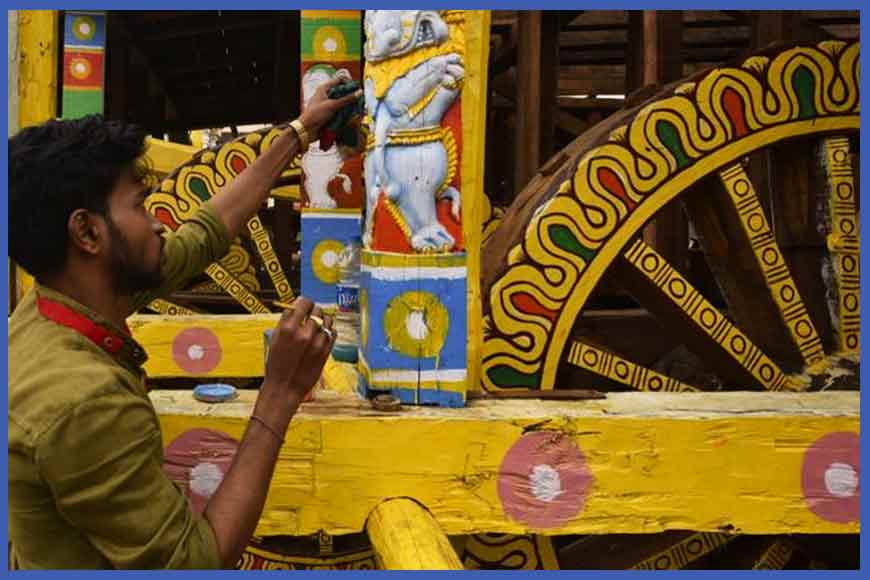Bengal paintings on chariots were another form of fresco painting

Wooden chariots were once a pride of Bengal and Orissa, they were used not just in war, but in the households of kings and zamindars as showpieces of valour too as well as in temples that worshipped deities like Jagannath Dev. The bodies of such chariots were a piece of art. They were usually coloured pictures drawn on a thick cloth, which were then fixed at an appropriate place on the body of the chariot. Local carpenters who built the framework and the decorative features of the chariot as well as the wooden idols mounted on it, often adopted this particular form of art to enhance the glamour of the chariot.
In his well-known poem ‘The Chariot of the Chowdhurys’ poet Jasimuddin describes the painting on the chariot in his own words:
Then came the expert painter and with a few touches of his
Brush so fine,
He brought forth on the chariot’s body many deities,
Supremely divine,
From colours drawn with a tender hand and everlasting image
Gained birth
And a spirit of singular peace descended on this fragile earth.
There is no doubt that the vivid description provided in this poem enhanced the prestige of the folk artists of the state. The paintings displayed on the chariots also serve as a reminder of the concept of fresco paintings. In fact, the style exhibited in these paintings brings out the very essence of the art of painting in Bengal simply and charmingly without any ambiguity, which is why they are considered genuine instances of folk art of Bengal.
Many diverse features can be seen in the paintings on chariots in different places in West Bengal. One such exhibit of a coloured painting on a chariot is held in the archives of Ananda Niketan in Howrah. In his book Dekha Hoy Nai, Amiyakumar Bandopadhyay commented on a few paintings of this type kept at the Amulya Archaeological Centre at Rajbalhat in Hooghly District. He says: “The six-seven paintings on large panels preserved at the Amulya Archaeological Centre display such a high standard of artistic skill that it is worth visiting Rajbalhat solely to have a look at these works. The themes of the paintings include among others, Radha and Krishna, united in love, a lady playing on the sitar, and a separate figure of a violin player. These paintings were collected from an ancient chariot belonging to the temple of Chhatreshwari Devi in Paliara village, situated on the banks of the Damodar River at a distance of around seven miles to the southwest of Rajbalhat. Even though the brightness of the colours has faded with time, these paintings stand out as superb instances of the high artistic skill of Bengali artists of the past era.”
Other notable instances of paintings on chariots are also found in Amragarhi of Howrah district showing Jagannath, Balaram, and Subhadra with several instrument players and others at Kanupat village which display the figures of Radha and Krishna.









